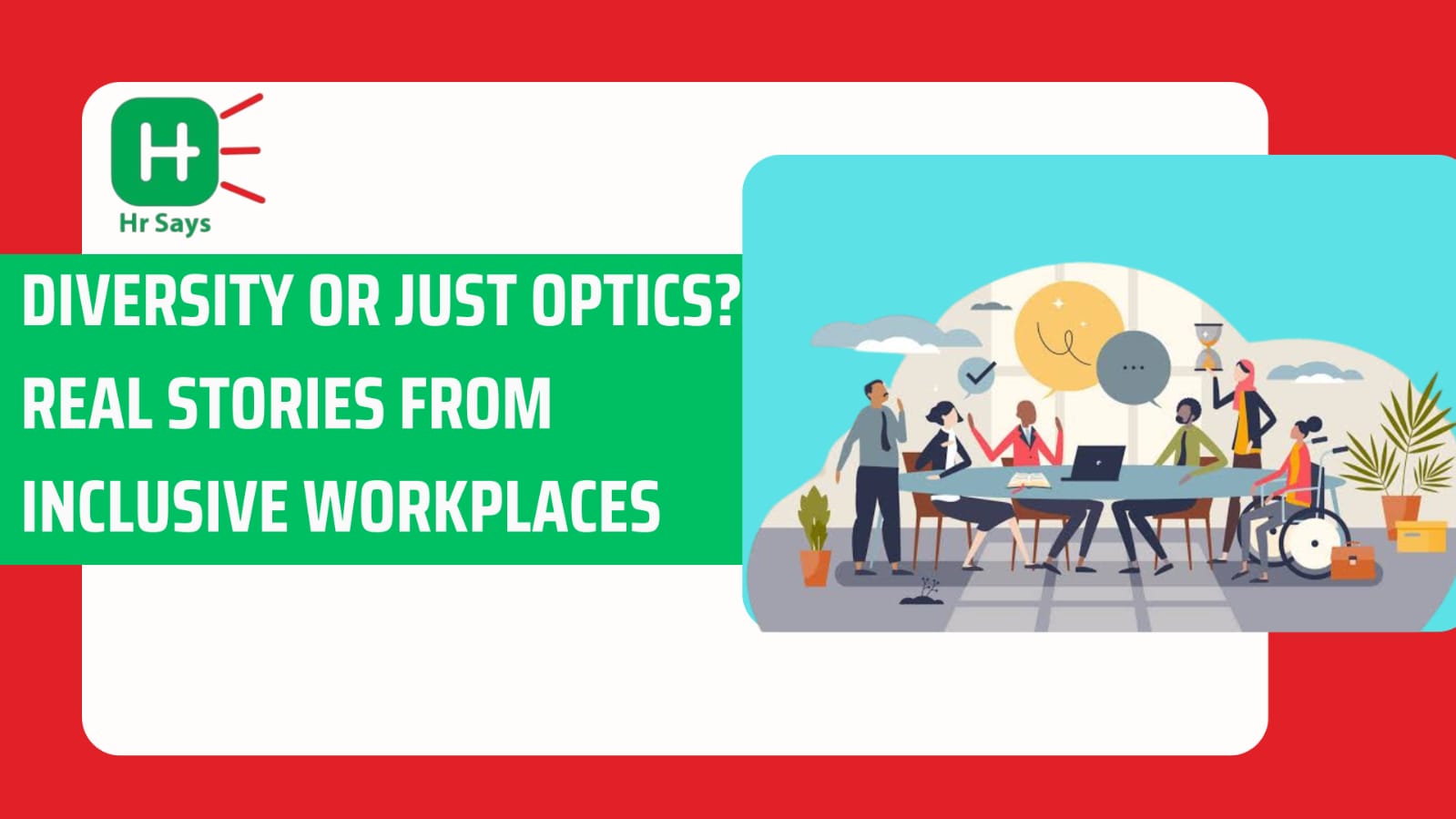In 2025, diversity isn’t the hard part — visibility is everywhere.
What’s harder? Proving that inclusion isn’t just a policy. That it lives in conversations, team decisions, and leadership trust.
From hiring dashboards to DEI statements, companies know what to say. But the teams that are truly inclusive are the ones where diverse voices shape the room, not just fill it.
So how do you know if your workplace is truly inclusive — or just checking a box?
Let’s unpack what real inclusion feels like, and how progressive HR teams are testing for it in the most human way possible.
💬 Diversity ≠ Inclusion
Diversity is the mix.
Inclusion is who’s asked to dance, invited to speak, or trusted to lead.
According to McKinsey’s 2024 Women in the Workplace report:
- 78% of companies have diversity goals, but only 27% of employees say those efforts feel authentic
- More than half of underrepresented employees feel they’ve been passed over or spoken over — even in “diverse” companies
Optics don’t create culture. Experiences do.
🧠 The Real Signals of Inclusion
Here’s how truly inclusive teams behave — regardless of their official DEI strategy:
|
Inclusion Signal |
What It Looks Like |
|
Voice Equity |
Everyone speaks in meetings — and is heard |
|
Psychological Safety |
People can disagree with leadership without fear |
|
Recognition Balance |
Credit is shared, not hoarded |
|
Access to Visibility |
Opportunities aren’t limited to the loudest voices |
|
Feedback Channels |
Feedback flows up, not just down |
If these things aren’t happening — your DEI initiative may be optics-first.
🎯 Try This Game: “Seen or Skipped?” – A DEI Culture Check-In
Before your next diversity townhall or team sync, try this powerful, reflective team exercise. It reveals whether inclusion is real — or performative.
How It Works:Ask team members to respond to the following prompts with:
✅ Seen | ❌ Skipped | ❓ Unsure
- Have you seen a colleague from a different background be listened to with full attention in meetings?
- Have you seen someone get interrupted repeatedly or ignored during calls?
- Have you seen diverse employees lead high-visibility projects recently?
- Have you seen leadership ask for — and act on — alternative viewpoints?
- Have you seen someone penalized for respectfully disagreeing with a decision?
- Have you seen someone get recognition for work they didn’t fully do?
- Have you seen a DEI initiative with a visible impact in your team or process?
You can run this anonymously using Google Forms or openly in small teams. Give space for short “story behind the answer” entries too.
Why It Works:- It proves what your policies can’t show — lived employee experience
- It turns assumptions into data, and silence into stories
- It gives your DEI program something most don’t have: accountability at the ground level
End the session by asking:
👉 What’s one step we can take this month to turn a “Skipped” into a “Seen”?
✨ Final Thought: Don’t Just Track Representation. Track Respect.
If your DEI strategy starts and ends with hiring numbers or holiday campaigns, you’re not building inclusion — you’re branding it.
The teams that thrive in 2025 are those where everyone feels like they matter even when no one’s watching.
Up next on HRsays: Gen Z at Work — What HR Needs to Change in 2025
📢 Want to share how your team is building real inclusion? Or experienced a skipped moment that turned into a breakthrough? Submit your story to HRsays — your voice can help shape better workplaces.

 Diversity statements are easy — inclusion is harder, messier, and more meaningful. In this article, we explore the difference between performative DEI and authentic, embedded practices. From hiring audits to cultural rituals, we examine what real inclusion looks like in Indian workplaces today. A checklist helps readers self-assess their organization’s DEI depth. If you want your diversity work to matter, this is where you start.
Diversity statements are easy — inclusion is harder, messier, and more meaningful. In this article, we explore the difference between performative DEI and authentic, embedded practices. From hiring audits to cultural rituals, we examine what real inclusion looks like in Indian workplaces today. A checklist helps readers self-assess their organization’s DEI depth. If you want your diversity work to matter, this is where you start.













.jpeg)
.jpeg)

.jpeg)

.jpeg)


.jpeg)

.jpeg)

.jpeg)


